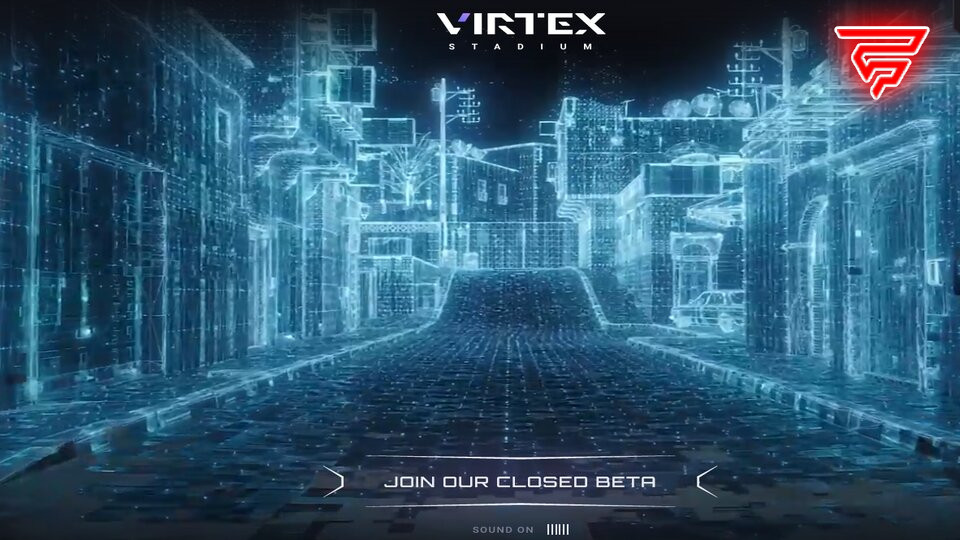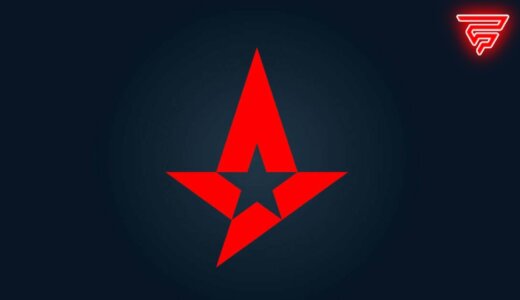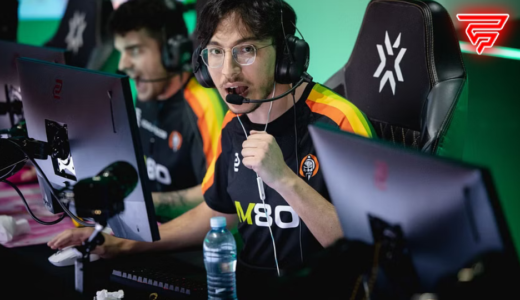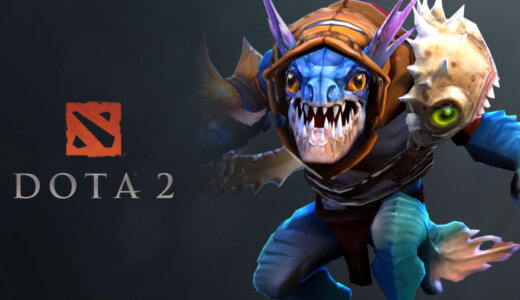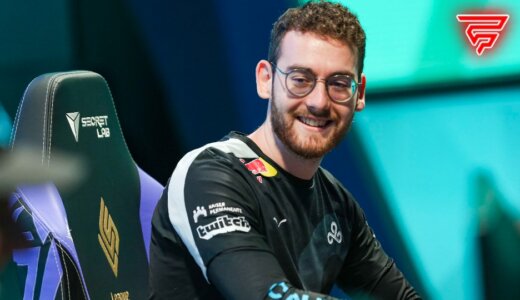Despite the growth it has experienced over the last decade, esports is still in its infancy. The biggest sports events are watched by billions of people. The biggest esports events are watched by less than five million people. At the same time, the esports industry comprises around 500 million people.
This means that there’s a huge discrepancy between the number of gamers who play competitive games and the number of gamers who watch professional tournaments. So what can be done about this?

Valve Corporation, CS:GO
Introducing Virtex Entertainment
One of the companies that have taken the quest to make esports tournaments more captivating is Virtex. Its goal is to allow people to experience the action more vividly by creating a digital stadium in which esports fans can sit next to their friends, talk to them, and watch the action in three different ways.
The stadium includes a simulated large screen that practically shows you the action exactly how you view it on Twitch. But it also includes a miniature map in the middle, that shows you everything in real time. So you can see the players, their movements, all the duels, the grenades, and so on.
What this means is that instead of having just the perspective provided by the tournament organizer’s observers, you have a bird’s eye view of the match and can enjoy it in a much more exciting way.
On top of that, you can also choose to be transported to your chosen map location and essentially become the 11th player inside the game. You can move around and stand invisible behind your favorite players, watching their struggle as a kind of guardian angel.
This concept, introduced by Virtex, is revolutionary and can take the tournament-watching experience to a whole new level. The company has begun to develop its Virtex Stadium more than three years ago. Its product is currently in the closed beta stage and will be released in 2023.
At the moment, Virtex employs around two dozen specialists and plans to hire more people as things progress. The company is already in talks with ESL and other tournament organizers, and will likely make a big impact in esports in the years to come.

ESL | Patrick-Strack
Interview with Christoph Ortlepp
Recently, we had the opportunity to interview Virtex Entertainment’s COO and Co-founder, Christoph Ortlepp, who gave us a tour of Virtex Stadium. During the 45-minute interview, we spoke about the project, how it started, where it’s headed, and what it seeks to accomplish.
The conversation was very exciting, and the essence of what it contained can be found below.
For a lot of gamers, the notion of Virtex Stadium is a bit abstract. How would you describe it to them?
The main mission for us is to create the best possible experience for the viewers who won’t be present at the actual live event. Current 3D technology enables us to provide a better way for people to be part of a tournament remotely.
A huge part of this is the feeling of a shared experience. That’s the main reason why we decided to go with the architecture of a stadium. The idea is to bring people together around their favorite event.
When a sporting event is happening in your city, you want to enjoy it with your friends. You plan for it, you’re filled with anticipation, and you’re excited all week.
We feel that this way of experiencing a sporting event differs significantly and is much more captivating than the standard one that’s used in esports, where you are watching a tournament just by yourself.
And even in a Discord call for example, where you can have a lot of people watching a match together on a voice channel, it’s not like you can have genuine conversations because there are too many people talking over each other.
But Virtex Stadium features spatialized audio that realistically reflects a real-world experience. For instance, if you sit 10 feet away from someone, you don’t hear them as loudly as you would if they were sitting right next to you.

Virtex Stadium (early development demo)
Present technology allows us to recreate this experience and offer people a realistic digital stadium in which they can experience the thrill of each match together with their friends.
In the development of Virtex Stadium, we’ve implemented features that allow spectators to find their friends inside the stadium and then choose who they want to sit next to. If you want to sit in the Na’Vi corner and experience the match while being right next to s1mple fans, you can do that.
The stadium makes it easy for you to find like-minded people and discuss with them during the match without disturbing or being disturbed by others that are far away from you. However, we wanted to preserve the energy and the atmosphere that you’d experience in a real venue. So certain sounds will still be part of the experience.
To enhance the viewer’s experience, we implemented systems that can be operated to create a lot of the elements that make up the atmosphere of a real match experienced in a large venue.
For the 3D map inside the stadium, we are collaborating with Skybox.gg. They produce 3D tools for training, which can assist professional teams. We reached out to them and told them that we want to create a unique experience for the viewers by letting them watch the action not just on a simulated large screen but also on a simulated 3D map.
For the recreation of the 3D map, we obtained Valve’s approval. And we’ve already done it not just for CS:GO but also for Source 2. So we’re almost ready to go. When Source 2 will be launched, we will also have Virtex Stadium adapted for it.
Right now, we’re using replay files to test the system. But when we launch, everything will work in real-time.

Valve Corporation, Source 2
Do other esports companies know about Virtex Stadium?
We are currently in talks with Valve, ESL, BLAST, DreamHack, Twitch, and others. Our goal is to collaborate with them and get their input so that we can create Virtex Stadium in a way that takes into account their sponsors and priorities. All of them are aware of our project and what it can do.
We don’t want to be the ones organizing events. We just want to focus on helping those who are creating events to offer their fans the opportunity to experience them in a fun and realistic way. We basically showed companies like ESL our Virtex Stadium and told them: “Look! This can be your own stadium. Tell us how you want us to customize it for your events.”
It’s going to be branded in a way that’s compatible with the sponsors and virtual merchandise of every tournament organizer we’ll be working with. At this stage, we’re still working out some of the commercial components. But the goal is to provide as much value as possible to the event organizers.
Will you be focusing on Counter-Strike or are there other games you have in mind as well?
Right now, the Counter-Strike stadium is our core product. But our plan is to integrate other esports as well.
For how long have you been working on this project?
Tim McGuinness is my Co-founder and he is the one who prototyped everything. I’m mostly responsible for the business side. Tim and I met in 2019 at an esports event. We were already playing around with social experiences in VR.
We spent around a year getting to know each other and discussing our ideas. And around mid-2020 we formally started Virtex. For the whole duration of that year, it was just the two of us working together. Using his initial demo, we got some angel investing.
That allowed us to start hiring people. At the end of 2021, we were around eight people on the team. Today, the team numbers 24 people and we’re planning to grow a bit more before launching the platform. We have developers, artists, community managers, and so on.

Virtex Entertainment
What types of specialists are you looking for?
Right now, we’re looking for technical people to add to the team, who have ideas about what can be done to improve the digital stadium. Some good product designers could help us a lot to figure out how we could take everything that a Counter-Strike match provides and utilize it to provide a great experience for the spectators.
The good part is that we have the environment built and everything works. Now we need to start thinking more about the experience.
I think that there’s a long journey ahead and a lot of experimentation to be done, in order to figure out what would turn Virtex Stadium into a digital place that makes esports fans excited about watching tournaments.
When is the closed beta taking place and how can people join it?
Right now, the best approach for gamers is to join our Discord server and add Virtex Stadium to their wish list on Steam. We are already doing a few sessions to test the stadium and validate all of its features.
We’re very close to doing the first play sessions with replay files. We still need to fix a few technical issues but we’re moving quickly and should be ready with everything for our first users later this year, perhaps even by Summer’s end. Using their feedback, we will then further improve the platform iteratively.
We’re now in a closed beta and we’ll start the open beta very soon. When it’s ready, people will be able to download Virtex Stadium on Steam and start experimenting with it, which is why they should add it to their wish list.
Final remarks
If you’re watching CS:GO events regularly, Virtex Entertainment is a company that you should definitely keep an eye on. Soon, its digital stadium could allow us to experience the game’s tournaments in a revolutionary new way, from the comfort of our homes.
Header: Virtex Entertainment
